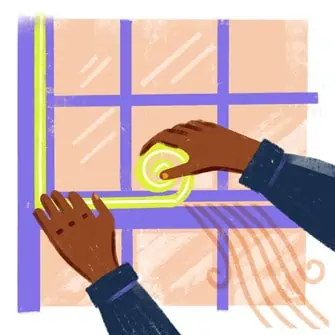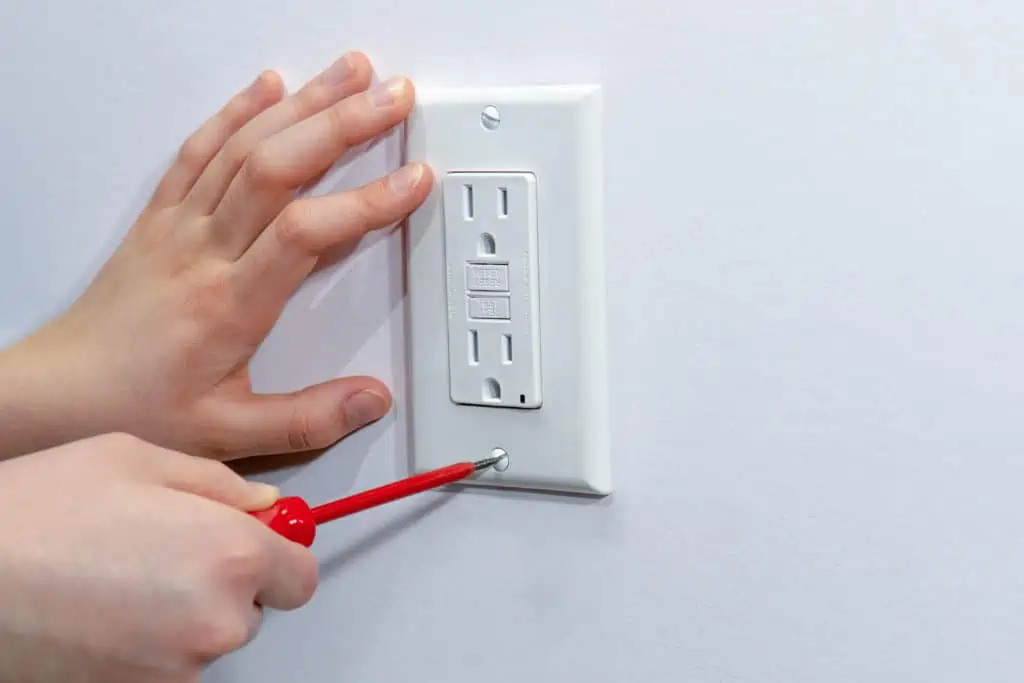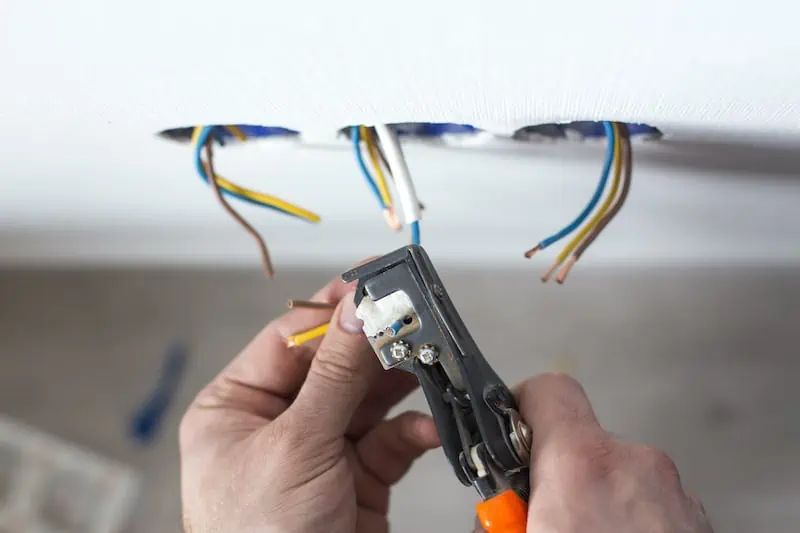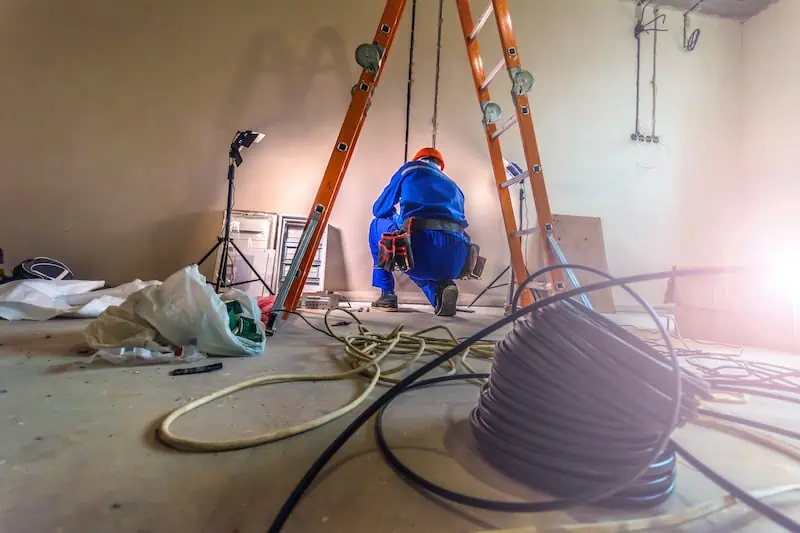One of the biggest factors when it comes to choosing where to live is the cost. And a significant percentage of that cost is taken up by utilities — the basic services needed to keep your home functioning and comfortable. These include electricity, gas, water, sewer, trash, internet, phone, and streaming services.
If you’re planning to relocate, it’s important to know how much costs for utilities run on average. Not to mention, the state you’re moving to might have much higher or lower costs than the national average. Read on for a full breakdown of utility costs nationally, state by state (link to table), and a bunch of tips on how to save money on your next bill.
The US National Average for Monthly Utility Costs
- Natural gas: $88.50
- Electricity: $121.01
- Water: $72.93
- Trash: $35-$75
- Cell phone: $144
- Internet: $61
- Cable: $83.35
- Streaming services: $78
The average monthly cost of natural gas
People rely on natural gas to heat their water, cook, dry their clothes, keep their homes warm, and more. The national average price of residential gas is $14.75 per thousand cubic feet, according to the U.S. Energy Information Administration (EIA).
However, the amount you personally spend on natural gas depends on several factors, including which appliances in your home use gas to operate, how large your home is, and the actual rate your gas company charges.
Also, gas usage varies by time of year. If you live in a colder climate, you’ll be using significantly more natural gas during those months compared to someone living in a place that’s close to 70 degrees all year. Because of this, the national average can be a little misleading. Be sure to keep this in mind when estimating your costs.
- The state with the highest monthly natural gas bill is Hawaii ($275.76)
- The state with the lowest monthly natural gas bill is Idaho ($51.90)
How to save money on natural gas
- Weather-proof your house: Look carefully for leaks around windows, doors, outlets, etc., so you can insulate better and rely less on heating.
- Use space heaters: These can easily warm you up while sitting on the couch or in the office, instead of heating your whole house.
- Get a smart thermostat: It can automatically adjust the temperature in your home when you’re away or sleeping.
- Upgrade to energy-efficient appliances: Old and inefficient appliances (such as your furnace, water heater, or oven) could be using up more natural gas than necessary. Consider upgrading to energy-efficient models, which will save you money in the long run.
The average monthly cost of electricity
The EIA reports that the national average electricity rate was $0.1366 cents per kWh in 2021, which is the most recent data available. (FYI: A kilowatt-hour equals the amount of energy you would use by keeping a 1,000-watt appliance running for one hour.) That equates to an average monthly bill of $121.01.
“It might not seem like much water, but a faucet that lets out one drip per second wastes over 3,000 gallons a year.”
Much like natural gas, how big your electricity bill gets depends on where you live and what you do for a living. People who work from home can pay up to 10% more, since they’re using computers or other office equipment throughout the day. Those who live in hot climates also tend to have more expensive bills, since they typically run air conditioning and fans for longer periods.
However, some states have much cheaper electricity prices. So even if you end up someplace scorching hot, or you need to have a 3-monitor setup for your job, your bill might not be that bad in the end.
- The state with the highest monthly electricity bill is Hawaii ($177.78)
- The state with the lowest monthly electricity bill is Utah ($80.87)
How to save money on electricity
- Unplug appliances that draw “phantom energy”: These appliances make up 23% of a household’s electricity use when they’re not in use; we’re talking toasters, coffee makers, computers, gaming consoles, phone chargers, and more.
- Adjust the temperature of your refrigerator: The recommended setting is 35°-38°F.
- Only run appliances when they’re full: Partially full dishwasher, washing machine, and dryer runs are killer on the wallet.
- Switch to LED light bulbs: LED bulbs use 90% less electricity than traditional incandescent bulbs and last 25 times longer.
See prices for local moving labor. Read real customer reviews. Easily book your help online.
The average monthly cost of water
Most people use a lot of water in their daily lives. There’s taking showers, brushing your teeth, watering the lawn, flushing the toilet, washing dishes and laundry, filling the dog’s bowl… you get the picture. And you might use a lot more water than you realize — the average American household uses about 300 gallons of water per day.

Compared to other utilities, the cost of water isn’t much. And if you rent, there’s a good chance your landlord foots this bill. But if not, it’s a good idea to know how much you might spend. The price of water has been increasing rapidly, and the average household water bill rose by 3.6% last year for a monthly bill of $72.93.
- The state with the highest monthly electricity bill is West Virginia ($91)
- The state with the lowest monthly natural gas bill is tied between Vermont and Wisconsin ($18)
How to save money on your water bill
- Shorten your showers: Showering accounts for about 17% of residential water use.
- Fix your leaky faucets (seriously): It might not seem like much water, but a faucet that lets out one drip per second wastes over 3,000 gallons a year.
- Time your gardening right: Water your outdoor plants and lawn in the morning or evening rather than the middle (aka the hottest time) of the day so you don’t lose water to evaporation.
- Install low-flow fixtures: Low-flow faucets, showerheads, and toilets can save a lot of water without compromising on performance.
- Use a rain barrel: Collecting rainwater can be a great way to reduce your water usage for outdoor activities like watering plants or washing your car.
The average cost of waste services
Another utility bill that you may be responsible for is waste disposal. Often, the cost of waste removal is rolled into your water/sewage bill, factored into local taxes, or covered by your landlord, but not always. If you’re expected to foot the bill, here’s what you can expect to pay for various waste disposal services.

Junk removal: Sometimes, you might be in a situation where you have large pieces of trash that can’t be collected by the weekly trash service. For instance, you might be moving and have some older pieces of furniture and appliances that need to be thrown away. In this case, you’ll need to schedule a one-time junk removal service and pay a fee.
The cost of a removal service will ultimately depend on the type and amount of waste you need removed. Prices typically range between $100 and $600, though you can expect to pay about $225 for residential junk removal, on average.
How to save money on waste services
- Adjust your pick-up schedule: If you don’t produce a lot of trash, Google your city or township and find out if you can swap for a smaller trash bin, or have your garbage picked up less often (such as biweekly or monthly).
- Separate glass and plastic: Take your cans, glass, and plastic containers to a recycling center, where you can get paid for them.
- Compare pricing: If you have to pay a private company for trash pickup, shop around and see if you can find a lower rate.
The average cost of a cell phone plan
Considering that cell phones these days are an all-in-one computer, camera, GPS system, and…well, an actual phone, most people rely on one to get by in their daily lives. And companies know they’re willing to pay a good chunk of change to do so.
“People who work from home can pay up to 10% more [on electricity], since they’re using computers or other office equipment throughout the day.”
Like most utilities, the cost of cell phone service has been on the rise. In fact, the Consumer Price Index of telephone services has increased by 7% since Jan. 2019. According to JD Power, the average cell phone bill is now $144.
How to save money on your cell phone plan
- Sign up for autopay or paperless billing: Many phone companies will knock $5 to $10 off your bill for having payments automatically deducted from your bank account or charged to a credit card, or for opting to receive your statements electronically.
- Switch to a prepaid plan: These provide all the minutes and data you need for a lot less per month, by design.
- Ask about discounts: Special discounts typically include ones for students, active duty and veterans, government workers, and employees of certain companies (ask your employer what phone discounts they have!).
The average cost of internet, cable, and streaming
It’s especially hard to get by without internet these days, considering how much we rely on it for work, school, news, and entertainment. And it’s a fairly substantial monthly cost, though as you might have guessed, it varies quite a bit. Factors that impact your internet costs include the type of connection, speed, and location.
Data compiled by Reviews.org found the average monthly price for various types of internet services as of 2021:
- DSL: $51/mo.
- Cable: $51/mo.
- Fiber: $64/mo.
- Satellite: $86/mo.
- All connection types: $61/mo.
If you’re one of the few who has yet to cut the cord on cable, this is another potentially hefty bill to add to your budget. According to CableTV.com, prices range between $54.99–$250.00 per month, or an average of $83.35 per month.
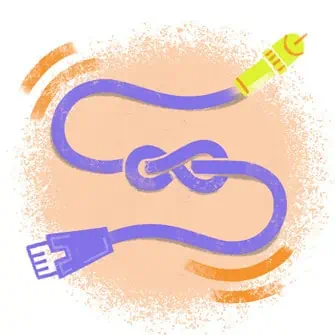
The amount you ultimately spend on streaming will depend on how many services you subscribe to and at what tier. At premium tier, four popular streaming services (Netflix, HBO+, Hulu, and Disney+) will cost you $68 a month. Add in music services like Spotify and Apple Music, online game subscriptions, or Live TV, and you’re looking at a bill well over 100$.
How to save money on internet, cable, and streaming
- Bundle when possible: If you haven’t already, ask your provider about bundle discounts since you can usually get a good deal by bundling your cable and internet service together. You can also save by bundling streaming services, such as the Disney bundle that includes Disney Plus, Hulu, and ESPN Plus.
- Get your provider to match another rate: Look up quotes from competitors and ask if your provider will match a lower rate; they’d rather give you the discount than lose a customer. And if they won’t, just switch to the cheaper plan!
- Get real about what you watch: Review your bill and cut extra services that you don’t use, such as premium channels you rarely watch.
- Lower the screen quality: You can often opt for a plan with ads and/or lower resolution for less money.
- See if you qualify for a free trial: If you buy a new phone plan, laptop, or smart device, find out if the service provider offers free trials of any streaming platforms.
See prices for local moving labor. Read real customer reviews. Easily book your help online.
The State-by-State Breakdown of Utility Bills
National averages are well and good, but you might have noticed a pattern: the cost of your bill ultimately depends on where you live. Below, you’ll find a table outlining the cost of utilities in each state. If you know you’re moving to one in particular, take a look to see how much different it will be compared to your current costs.
| Natural Gas | Electricity | Water | Waste | Phone | Internet | Streaming | Total | |
| US Average | $88.50 | $121.01 | $72.93 | $40.00 | $144.00 | $61.00 | $78.00 | $605.44 |
| Alabama | $109.68 | $147.75 | $30.00 | $40.00 | $144.00 | $61.00 | $78.00 | $610.43 |
| Alaska | $63.36 | $133.89 | $68.00 | $40.00 | $144.00 | $61.00 | $78.00 | $588.25 |
| Arizona | $98.46 | $131.35 | $64.00 | $40.00 | $144.00 | $61.00 | $78.00 | $616.81 |
| Arkansas | $108.12 | $123.69 | $26.00 | $40.00 | $144.00 | $61.00 | $78.00 | $580.81 |
| California | $136.62 | $123.67 | $77.00 | $40.00 | $144.00 | $61.00 | $78.00 | $660.29 |
| Colorado | $78.30 | $91.96 | $39.00 | $40.00 | $144.00 | $61.00 | $78.00 | $532.26 |
| Connecticut | $112.86 | $156.21 | $69.00 | $40.00 | $144.00 | $61.00 | $78.00 | $661.07 |
| Delaware | $101.94 | $118.85 | $26.00 | $40.00 | $144.00 | $61.00 | $78.00 | $569.79 |
| District of Columbia | $102.90 | $92.42 | $46.00 | $40.00 | $144.00 | $61.00 | $78.00 | $564.32 |
| Florida | $159.42 | $130.40 | $33.00 | $40.00 | $144.00 | $61.00 | $78.00 | $645.82 |
| Georgia | $90.48 | $134.11 | $28.00 | $40.00 | $144.00 | $61.00 | $78.00 | $575.59 |
| Hawaii | $275.76 | $177.78 | $64.00 | $40.00 | $144.00 | $61.00 | $78.00 | $840.54 |
| Idaho | $51.90 | $97.62 | $38.00 | $40.00 | $144.00 | $61.00 | $78.00 | $510.52 |
| Illinois | $73.38 | $95.86 | $26.00 | $40.00 | $144.00 | $61.00 | $78.00 | $518.24 |
| Indiana | $68.28 | $126.51 | $30.00 | $40.00 | $144.00 | $61.00 | $78.00 | $547.79 |
| Iowa | $67.32 | $109.63 | $32.00 | $40.00 | $144.00 | $61.00 | $78.00 | $531.95 |
| Kansas | $82.56 | $115.53 | $27.00 | $40.00 | $144.00 | $61.00 | $78.00 | $548.09 |
| Kentucky | $89.58 | $124.67 | $49.00 | $40.00 | $144.00 | $61.00 | $78.00 | $586.25 |
| Louisiana | $85.74 | $131.37 | $21.00 | $40.00 | $144.00 | $61.00 | $78.00 | $561.11 |
| Maine | $120.54 | $99.44 | $24.00 | $40.00 | $144.00 | $61.00 | $78.00 | $566.98 |
| Maryland | $105.66 | $127.62 | $46.00 | $40.00 | $144.00 | $61.00 | $78.00 | $602.28 |
| Massachusetts | $139.62 | $136.37 | $34.00 | $40.00 | $144.00 | $61.00 | $78.00 | $632.99 |
| Michigan | $71.82 | $117.57 | $29.00 | $40.00 | $144.00 | $61.00 | $78.00 | $541.39 |
| Minnesota | $68.76 | $104.76 | $28.00 | $40.00 | $144.00 | $61.00 | $78.00 | $524.52 |
| Mississippi | $82.92 | $135.31 | $23.00 | $40.00 | $144.00 | $61.00 | $78.00 | $564.23 |
| Missouri | $81.18 | $118.50 | $39.00 | $40.00 | $144.00 | $61.00 | $78.00 | $561.68 |
| Montana | $63.90 | $97.84 | $38.00 | $40.00 | $144.00 | $61.00 | $78.00 | $522.74 |
| Nebraska | $74.28 | $108.09 | $23.00 | $40.00 | $144.00 | $61.00 | $78.00 | $528.37 |
| Nevada | $78.60 | $110.17 | $26.00 | $40.00 | $144.00 | $61.00 | $78.00 | $537.77 |
| New Hampshire | $149.10 | $125.24 | $27.00 | $40.00 | $144.00 | $61.00 | $78.00 | $624.34 |
| New Jersey | $86.94 | $112.39 | $72.00 | $40.00 | $144.00 | $61.00 | $78.00 | $594.33 |
| New Mexico | $68.10 | $87.31 | $32.00 | $40.00 | $144.00 | $61.00 | $78.00 | $510.41 |
| New York | $100.50 | $116.70 | $30.00 | $40.00 | $144.00 | $61.00 | $78.00 | $570.20 |
| North Carolina | $99.60 | $120.38 | $30.00 | $40.00 | $144.00 | $61.00 | $78.00 | $572.98 |
| North Dakota | $63.06 | $112.93 | $31.00 | $40.00 | $144.00 | $61.00 | $78.00 | $529.99 |
| Ohio | $68.40 | $112.21 | $27.00 | $40.00 | $144.00 | $61.00 | $78.00 | $530.61 |
| Oklahoma | $72.78 | $119.69 | $35.00 | $40.00 | $144.00 | $61.00 | $78.00 | $550.47 |
| Oregon | $81.06 | $106.49 | $76.00 | $40.00 | $144.00 | $61.00 | $78.00 | $586.55 |
| Pennsylvania | $93.12 | $117.11 | $31.00 | $40.00 | $144.00 | $61.00 | $78.00 | $564.23 |
| Rhode Island | $120.18 | $130.40 | $32.00 | $40.00 | $144.00 | $61.00 | $78.00 | $605.58 |
| South Carolina | $76.08 | $138.65 | $33.00 | $40.00 | $144.00 | $61.00 | $78.00 | $570.73 |
| South Dakota | $54.36 | $124.50 | $26.00 | $40.00 | $144.00 | $61.00 | $78.00 | $527.86 |
| Tennessee | $69.96 | $130.98 | $43.00 | $40.00 | $144.00 | $61.00 | $78.00 | $566.94 |
| Texas | $96.24 | $132.40 | $37.00 | $40.00 | $144.00 | $61.00 | $78.00 | $588.64 |
| Utah | $70.68 | $80.87 | $38.00 | $40.00 | $144.00 | $61.00 | $78.00 | $512.55 |
| Vermont | $98.10 | $109.24 | $18.00 | $40.00 | $144.00 | $61.00 | $78.00 | $548.34 |
| Virginia | $97.38 | $130.92 | $36.00 | $40.00 | $144.00 | $61.00 | $78.00 | $587.30 |
| Washington | $78.66 | $99.45 | $75.00 | $40.00 | $144.00 | $61.00 | $78.00 | $576.11 |
| West Virginia | $76.26 | $129.61 | $91.00 | $40.00 | $144.00 | $61.00 | $78.00 | $619.87 |
| Wisconsin | $74.10 | $100.18 | $18.00 | $40.00 | $144.00 | $61.00 | $78.00 | $515.28 |
| Wyoming | $82.02 | $96.82 | $53.00 | $40.00 | $144.00 | $61.00 | $78.00 | $554.84 |

